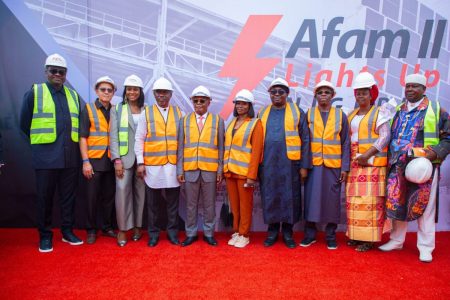
Michael James
30 January 2019, Sweetcrude, Lagos — The Federal Government on Tuesday projected a 10 per cent growth in the Nigerian maritime industry.
This was contained in the 2019/2020 maritime forecast unveiled by the Nigerian Maritime Administration and Safety Agency (NIMASA) in Lagos.
The forecast, the second in the series, is tagged “Harnessing the Maritime and Shipping Sector for Sustainable Growth”.
The forecast is meant to give direction to investors and stakeholders in the industry in their planning and investment decisions as part of efforts to attract more foreign direct investment to the economy.
Major plans covered by the forecast are the economic environment, the maritime industry (local and global), regulatory framework, and emerging opportunities and challenges.
Speaking at the unveiling ceremony, the Director General of NIMASA, Dr. Dakuku Peterside, said this year’s forecast will be addressing how emerging trends in the global maritime industry would affect the Nigerian maritime sector as well as domestic factors that will influence the sector. Dakuku said the maritime industry held a lot of promise for Nigeria.
“The maritime sector has the potential of contributing at least 10% of Nigeria’s GDP in no distant future, as Nigeria has the biggest market in Africa; and generates about 65-67% of cargo throughput in West Africa, and 65% of all cargo heading for these regions will most likely end up in the Nigerian market,” he said.
According to the forecast, the outlook for the economy in 2019 reflects, on the global side, concerns about a substantial global economic growth slowdown, likely higher US interest rates, a stronger dollar and volatile oil prices, possibly averaging below US$60pb, and domestically, the impact of sentiments surrounding the 2019 general elections and post-electoral transition.
The empirical analysis projects the growth of the total fleet size in 2019 over 2018 to be 10.33%, easing to 8.75% for 2020. Oil tanker fleet size is projected to decrease by 11.2% for both 2019 and recover to a positive growth of 0.11% by 2020. Non-oil tanker fleet size is estimated to increase by 14.3% in 2019 and 10.2% in 2020, while Oil Rig count is projected to increase by 6.98% and 6.5% for 2019 and 2020, respectively.
Dakuku identified asset building/acquisition and human capacity development as two factors that would enable Nigerians play a major role in the maritime and shipping sector. He said shipping is capital intensive and the Cabotage Vessel Financing Fund (CVFF) will not be adequate to address the huge demand for maritime asset. This propelled the Agency to seek other ship financing models, he said.



